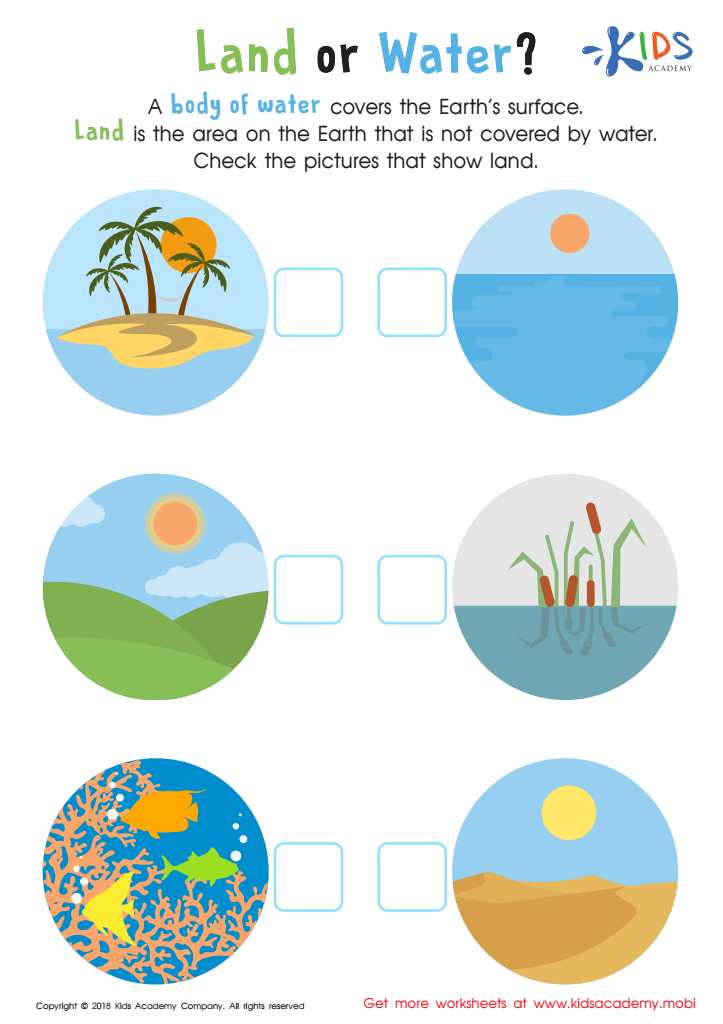Classifying animals Worksheets for Kids
1 filtered results
-
From - To


Land or Water Worksheet
Question/Answer
What are some effective activities to train students’ Classifying animals skill when teaching them about Geography?
Effective activities to train students' classifying animals skill in geography include creating animal flashcards for group sorting exercises, utilizing digital quizzes to match animals with their habitats, engaging in interactive mapping games to place animals in correct geographical locations, and conducting research projects on various ecosystems to categorize native wildlife. These activities combine visual learning, critical thinking, and collaborative work.
What does the Classifying animals skill mean when it comes to Kindergarten Geography learning?
The Classifying animals skill in Kindergarten Geography learning involves teaching children to group animals based on certain criteria such as habitat, type (mammals, birds, fish, reptiles, amphibians), size, or other distinguishing features. This foundational skill helps young learners understand biodiversity and the relationships between different animals and their environments, fostering early scientific thinking and awareness of the natural world.
How to test a Kindergarten student’s Classifying animals skills?
To test a Kindergarten student's animal classification skills, present them with a variety of animal pictures or figurines. Ask them to sort these into groups based on specific criteria such as habitat (water vs. land), type (mammals, birds, fish), or other simple characteristics (animals with wings vs. without wings). Observe their sorting process and reasoning to evaluate their understanding.
 Assign to My Students
Assign to My Students







.jpg)








